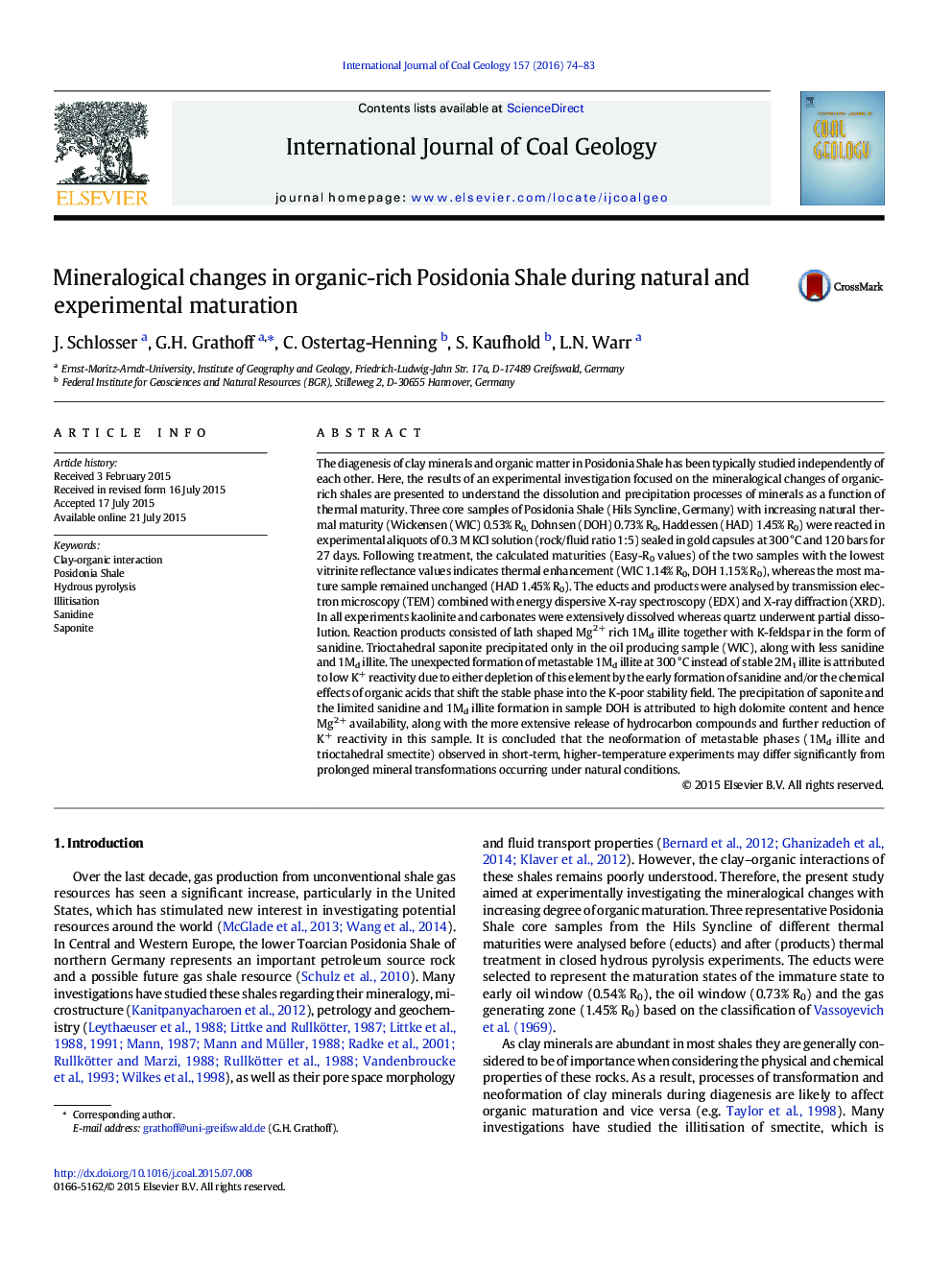| کد مقاله | کد نشریه | سال انتشار | مقاله انگلیسی | نسخه تمام متن |
|---|---|---|---|---|
| 1752835 | 1522545 | 2016 | 10 صفحه PDF | دانلود رایگان |
• High-temperature experiment of immature, oil and gas producing Posidonia Shale
• Mineral transformation different to previous experiments (e.g. 2M1 illitisation)
• Neoformation of Mg2 + rich 1Md illites (metastable) and K-feldspar sanidine
• Neoformation of trioctahedral saponite (metastable) only in oil window sample
The diagenesis of clay minerals and organic matter in Posidonia Shale has been typically studied independently of each other. Here, the results of an experimental investigation focused on the mineralogical changes of organic-rich shales are presented to understand the dissolution and precipitation processes of minerals as a function of thermal maturity. Three core samples of Posidonia Shale (Hils Syncline, Germany) with increasing natural thermal maturity (Wickensen (WIC) 0.53% R0, Dohnsen (DOH) 0.73% R0, Haddessen (HAD) 1.45% R0) were reacted in experimental aliquots of 0.3 M KCl solution (rock/fluid ratio 1:5) sealed in gold capsules at 300 °C and 120 bars for 27 days. Following treatment, the calculated maturities (Easy-R0 values) of the two samples with the lowest vitrinite reflectance values indicates thermal enhancement (WIC 1.14% R0, DOH 1.15% R0), whereas the most mature sample remained unchanged (HAD 1.45% R0). The educts and products were analysed by transmission electron microscopy (TEM) combined with energy dispersive X-ray spectroscopy (EDX) and X-ray diffraction (XRD). In all experiments kaolinite and carbonates were extensively dissolved whereas quartz underwent partial dissolution. Reaction products consisted of lath shaped Mg2+ rich 1Md illite together with K-feldspar in the form of sanidine. Trioctahedral saponite precipitated only in the oil producing sample (WIC), along with less sanidine and 1Md illite. The unexpected formation of metastable 1Md illite at 300 °C instead of stable 2M1 illite is attributed to low K+ reactivity due to either depletion of this element by the early formation of sanidine and/or the chemical effects of organic acids that shift the stable phase into the K-poor stability field. The precipitation of saponite and the limited sanidine and 1Md illite formation in sample DOH is attributed to high dolomite content and hence Mg2+ availability, along with the more extensive release of hydrocarbon compounds and further reduction of K+ reactivity in this sample. It is concluded that the neoformation of metastable phases (1Md illite and trioctahedral smectite) observed in short-term, higher-temperature experiments may differ significantly from prolonged mineral transformations occurring under natural conditions.
Journal: International Journal of Coal Geology - Volume 157, 1 March 2016, Pages 74–83
